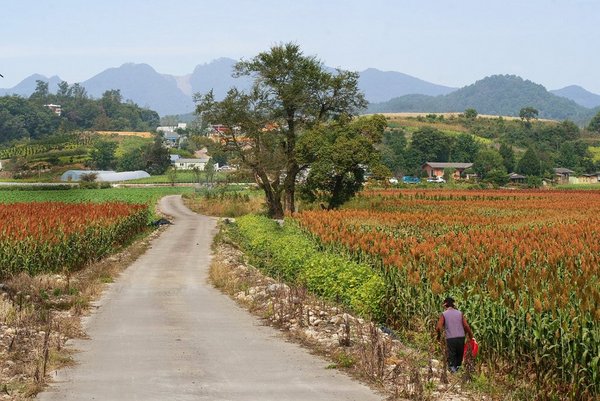 Read this article in French
Read this article in French- Share this article
- Subscribe to our newsletter
ICRISAT announces release of new sorghum hybrid with high increase in yield
A collaboration between the International Crops Research Institute for the Semi-Arid Tropics (ICRISAT) and the Pan African Seed Company, the Seed Co Group, resulted in the development of a new sorghum variety that has a yield potential of up to eight tonnes per hectare, offering farmers a 25 per cent yield increase over existing varieties, ICRISAT informed in a press release of 20th February.
Dr Jacqueline Hughes, Director General of ICRISAT, said the release of this new sorghum hybrid was a significant achievement resulting from innovative research conducted through the Sorghum and Pearl Millet Hybrid Parents Research Consortium (SPMHPRC).
“This breakthrough is a prime example of how ICRISAT's research efforts are contributing to the well-being of farmers and their families across the Continent, to global food and nutritional security, and ultimately, to the achievement of the Sustainable Development Goals,” Hughes noted.
New sorghum hybrid will contribute to mitigating the effects of climate change
According to Dr Gorden Mabuyaye, head of Seed-Co Global Research & Development, the partnership with ICRISAT strives to bring innovative and high-performing seeds to the market. “Our partnership is making a positive impact on farmers and their incomes, and this new hybrid will go a long way in mitigating the effects of climate change in Sub-Saharan Africa," said Dr Mabuyaye.
Presenting the new hybrid sorghum variety. Dr Hapson Mushoriwa, ICRISAT’s Principal Scientist for Eastern and Southern Africa, said that the new variety matured between 85 to 118 days and had good resistance to common leaf diseases, and that its strong straw structure helped maintain plant stability, which is essential for efficient and profitable crop production.
Dr Mushoriwa expects this new hybrid to be well-adapted to the agro-climatic conditions of Zimbabwe, offering a promising solution to sorghum farmers, particularly in those regions with moderate to erratic rainfall patterns.
“The SPMHPRC had been a key factor in enabling ICRISAT and its partners to pool their resources and expertise to develop new varieties that are well adapted to the needs of farmers and the market, and this is another example of this success,” concluded ICRISAT’s Regional Director and Country Representative – Kenya, Eastern & Southern Africa, Dr Rebbie Harawa,in the press release.
(ICRISAT/wi)
More information:
Link to the Sorghum and Pearl Millet Hybrid Parents Research Consortium (SPMHPRC)





Add a comment
Comments :
also applying BioGeometry, Electro-culture or Electro-agriculture (which is the same thing) or Pyramid energy resulting not only in bigger yields but at the same time reducing the need for pesticides and fertilizers while o-called Cloudbusters can provide rainfall in times of drought (but beware, extensive use will result in a flood
if applied at the same time in the same area).